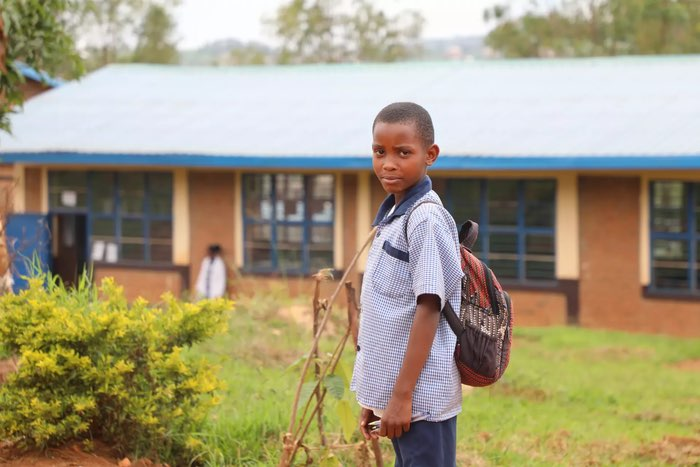
The effects are evident: shorter, more intense rainy seasons in the north and west, and increasing droughts in the east. These changes have led to severe landslides, erosion, and flooding, threatening the livelihoods of many Rwandans.
Despite these challenges, Rwanda is committed to a sustainable future. At the policy level, the government has ratified international agreements like the Paris Agreement and developed national strategies to combat climate change. However, the real story of change lies in the hands of Rwanda’s youth, who make up nearly half of the country’s 13 million people.
Recognizing the importance of engaging young people in climate action, UNICEF and World Vision Rwanda have launched the “Greening Schools Programme.” This initiative aims to educate and empower children and adolescents to take an active role in environmental conservation. Through this program, over 10,000 students across ten schools are learning about climate change and environmental stewardship.
One of the key activities of the program is tree planting. Students are not only taught the importance of trees in absorbing carbon dioxide and preventing soil erosion but are also given the responsibility to plant and care for them. This hands-on approach helps them understand the impact of their actions on the environment and fosters a sense of ownership and responsibility.
Tuyishime Shalom is a student in senior two at Groupe Scolaire Matyazo located in Rwamagana District, Eastern Rwanda.
Shalom, like many of her peers, has witnessed the devastating effects of climate change firsthand. “Our village has suffered from landslides and floods,” she says. “But now, through the Greening Schools Programme, we are planting trees around our school and community. It feels good to know that we are making a difference.”
She excitedly illustrates and gesticulates as she explains that every Wednesday, her, and her classmates come to school clad in sports attire, and set about planting news trees, and maintaining existing ones.
“Shaded areas provide cooler spaces for outdoor activities and reduce dust, making it easier for students to focus on their studies,” she adds.
“The trees make our school beautiful and help us learn about taking care of our planet.” She concludes.
The Greening Schools Programme extends to the local community in the immediate vicinity. Uwineza Lea and Gasana Martin both live in Matyazo village, Gishore cell, Nyakaliro sector, not too far from Groupe Scolaire Matyazo.
“Once upon a time, the earth was completely green and covered with trees and lush greenery. I strongly feel that each one of us should play a role in ensuring environmental conservation, and tree planting is one of the easiest and sure-fire ways to do so. I am very proud to have now planted more than 30 trees, mostly Grevillea trees and some fruit trees, around my home,” Martin exclaims.
Lea adds that she chose avocado trees to plant at her home, because the benefits of having the tree are two-fold: the tree provides shade and will be a source of avocados, which her eldest daughter absolutely loves.
To date, GS Matyazo students and teachers have planted 1,040 trees and an additional 2,925 developed in the school’s nursery were planted in the local communities surrounding the schools.
The Greening Schools Programme is more than just an environmental initiative; it is a movement that empowers the youth to lead the fight against climate change. By equipping them with knowledge and skills, Rwanda is not only building a greener future but also nurturing a generation of environmentally conscious leaders.
As Rwanda continues to face the challenges of climate change, the resilience and determination of its young people offer a beacon of hope. Through their efforts, the country is taking significant steps towards a sustainable and prosperous future. (Fin)
